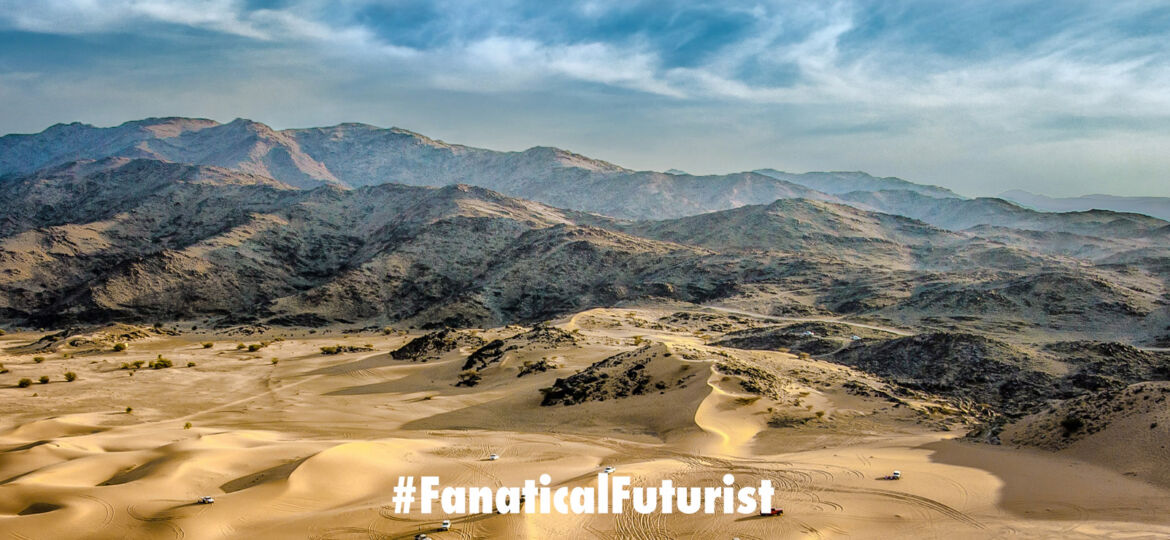
WHY THIS MATTERS IN BRIEF
The Line is a revolution in city building, designed from a blank slate with the future in mind it does away with alot of the problems that beset modern cities.
 Love the Exponential Future? Join our XPotential Community, future proof yourself with courses from XPotential University, connect, watch a keynote, or browse my blog.
Love the Exponential Future? Join our XPotential Community, future proof yourself with courses from XPotential University, connect, watch a keynote, or browse my blog.
When it comes to the future of cities everyone tends to agree that they’ll be smart, and that over 65 percent of the world’s population will live in them. Noone though predicted that in the future cities would be line shaped, even me, and I just did a keynote for the Saudi Government in a car park in Riyhad – it’s a long story involving COVID. Anyway, moving on.
This week Mohammed bin Salman, the crown prince of Saudi Arabia unveiled the country’s plans for a 100 mile belt of zero energy walkable communities that will be home to over a million people. Staggeringly the linear city will also have no cars or streets, with all residents living within a five-minute walk of essential facilities.
Introducing “The Line”
Bin Salman announced plans for the city, known as “The Line,” in a video where he described it as a “civilisational revolution that puts humans first.”
The 100 mile long, 170 kilometres, mega city will consist of lots of connected communities which it calls “City modules,” and link the Red Sea coast with the north west of Saudi Arabia which will also give the Kingdom the ability to quickly move goods from one coast to the to the other and in doing so bypass some of today’s traditional shipping routes.
Courtesy: Neom
It will be a part of Neom, Saudi Arabia’s fully automated $500 billion region that will span Saudi Arabia, Jordan and Egypt and be entirely powered by renewable energy. According to Bin Salman, who is also the chairman of the Neom company board of directors, construction of The Line will start in the first quarter of 2021.
“High speed transportation, utilities, digital infrastructure, and logistics will be seamlessly integrated in dedicated spaces running in an invisible layer along The Line,” said a statement.
Drawings show vehicles driven by Artificial Intelligence (AI), a metro line and high-speed freight transportation located underground. Overground will be a “pedestrian layer” supported by two underground layers – one “service layer” level of infrastructure directly underneath the ground and a lower-level “spine layer” for transport.
This spine will connect the different communities, which Neom envisages will house one million inhabitants and be stretched across 100 miles. Transportation from one end of The Line to the other will never take more than 20 minutes, according to Neom’s developers, which could be made possible by the use of Mach 1 hyperloop trains.
Bin Salman also positioned the project as a response to issues of pollution and traffic accidents.
“By 2050, commute durations will double,” he said. “By 2050, one billion people will have to relocate due to rising CO2 emissions and sea levels. 90 per cent of people breathe polluted air,” he said. “Why should we sacrifice nature for the sake of development? Why should seven million people die every year because of pollution? Why should we lose one million people every year due to traffic accidents?”
The AI powered autonomous transportation will be made possible by massive data harnessing. In a statement, The Line’s developers said its communities will be “Cognitive” and powered by AI, which will “continuously be learning predictive ways to make life easier”.
“An estimated 90 per cent of available data will be harnessed to enhance infrastructure capabilities far beyond the 1 per cent typically utilised in existing smart cities,” it added. Furthermore, buildings will be carbon positive and powered by clean energy and according to Neom, and the layout of The Line will mean that 95 per cent of the land in the Neom region, which is located on a key trade route, is protected.


















